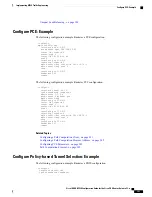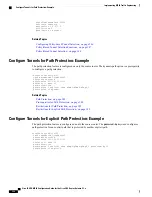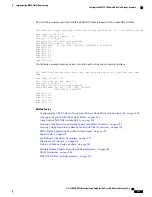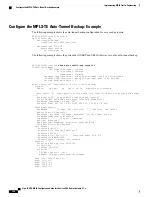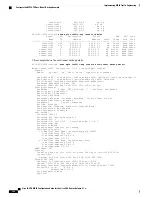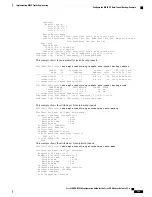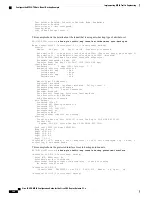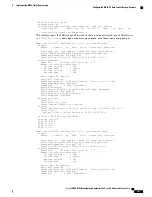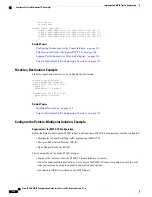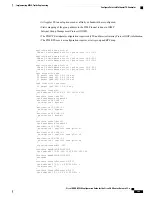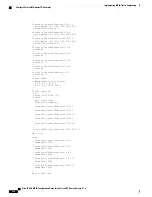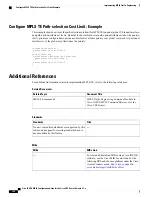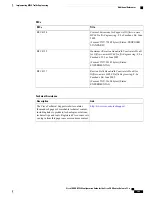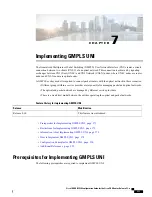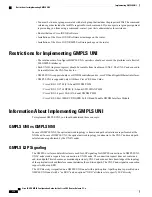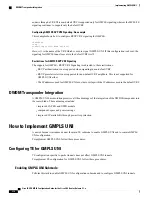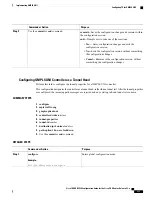
Configure Point-to-Multipoint for the Source: Example
At the source, multicast routing must be enabled on both the tunnel-mte interface and customer-facing interface.
Then, the static-group must be configured on the tunnel-mte interface to forward specified multicast traffic
over P2MP LSP.
The multicast group address, which is in Source-Specific Multicast (SSM) address range (ff35::/16), must
be used on the static-group configuration because Cisco IOS XR software supports only SSM for Label
Switch Multicast (LSM). Additionally, the customer-facing interface must have an IPv6 address.
Note
multicast-routing
address-family ipv6
interface tunnel-mte 1
enable
!
interface GigabitEthernet0/2/0/3
enable
!
!
!
router mld
vrf default
interface tunnel-mte 1
static-group ff35::1 2000::1 3eFF::A
!
!
!
interface tunnel-mte 1
ipv4 unnumbered Loopback0
destination 3.3.3.3
path-option 1 dynamic
destination 4.4.4.4
path-option 1 dynamic
!
!
Related Topics
Enabling Multicast Routing on the Router, on page 307
Point-to-Multipoint Traffic-Engineering Overview, on page 193
Configuring the Static Group for the Point-to-Multipoint Interface, on page 309
Point-to-Multipoint RSVP-TE , on page 195
Configure the Point-to-Multipoint Tunnel: Example
There is no difference between logging events at the tunnel level for both P2P and P2MP. The P2MP tunnel
reoptimizes only at the per tunnel level.
interface tunnel-mte1
ipv4 unnumbered Loopback0
destination 60.60.60.60
logging events lsp-status state
logging events lsp-status reroute
path-option 10 explicit name toR6_via_R2andR3
!
logging events lsp-status reoptimize
logging events lsp-status state
logging events lsp-status reroute
Cisco IOS XR MPLS Configuration Guide for the Cisco CRS Router, Release 5.1.x
363
Implementing MPLS Traffic Engineering
Configure Point-to-Multipoint TE: Examples



